Once known as Persia, Iran and Afghanistan hold a very special place in the history of Islam.
The perception of Iran today is highly skewed and misunderstood by almost all. A plague of short-sightedness has caused even Muslims to see this great and rich land as a place with hostility, mistrust and fear.
For the past 2 years I have been actively trying to inform and educate others, as well as myself, on the true place and position of this magnificent land not only in Islam but in our shared human history.
How can a land and culture that gave us Imam Al-Ghazali, Mawlana Rumi, Imam Bukhari, Al-Farabi, Ibn Sina and many more be considered a land that deserves to be forgotten or worse, remembered for nothing but a narrative that erases its richness?
The Prophet Muhammad (pbuh) once said:
“If learning were suspended in the highest parts of the heaven the Persians would attain it”
Muslim Conquest of Persia
In 628, the Prophet Muhammad (pbuh) sent letters to princes, kings and chiefs of various tribes and kingdoms, inviting them to Islam. These letters were sent to Persia, Byzantium, Ethiopia, Egypt, Yemen and Iraq on the same day. All narrations say that when the king of Persia, Khosrau II received the letter he ripped it in anger. The letter reads as below:
In the name of Allah, the Beneficent, the Merciful.
“From Muhammad, the Messenger of Allah, to the great Kisra of Iran. Peace be upon him, who seeks truth and expresses belief in Allah and in His Prophet and testifies that there is no god but Allah and that He has no partner, and who believes that Muhammad is His Worshipper and Prophet. Under the Command of Allah, I invite you to Him. He has sent me for the guidance of all people so that I may warn them all of His wrath and may present the unbelievers with an ultimatum. Embrace Islam so that you may remain safe. And if you refuse to accept Islam, you will be responsible for the sins of the Magi.”
The Prophet had predicted to his companions that the lands of Yemen, Shams (Syria and the Levant, which was under Roman rule) and Persia would become Muslim. Islam would then enter Persia only five years after the death of the Prophet (pbuh), and less than twenty years later (year 651) all of Persian would come under the rule of Islam.
The Rashidun
The arrival of Islam, a conquest that began under Abu Bakr, but Umar ibn-Khattab, the second Caliph would complete, saw the end of the mighty Sasanian Empire.
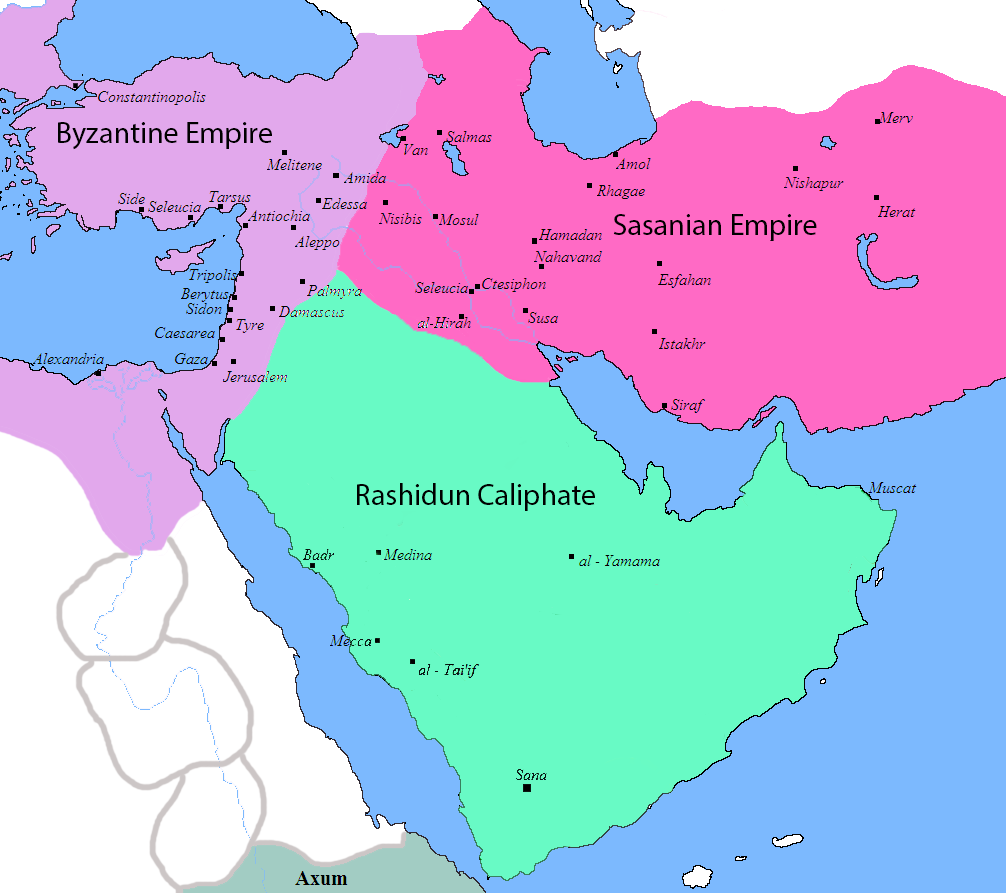
For the historians, the conquest first began under the great Khalid Ibn Walid who first invaded Iraq, but Sa`d ibn Abi Waqqas would complete. Directing from Medina, Umar ibn-Khattab quick conquest of Iran in a series of well-coordinated, multi-prolonged attacks became his greatest triumph, contributing to his reputation as a great military and political strategist.
The fall of the Sasanian saw the end of Zoroastrianism as the state religion. Iranians were among the very earliest converts to Islam, and their conversion in significant numbers began as soon as the Arab armies reached and overran the Persian plateau. Despite some resistance from elements of the Zoroastrian clergy and other ancient religions, the vast majority of Iranians became and have remained Muslims. Today 98% of ethnic Iranians, including the population of Persia, are at least nominal Muslims. For such a fundamental, pervasive, and enduring cultural transformation, the phenomenon of Iranian conversions to Islam has received remarkably little scholarly attention. One can only say Alhumdulillah.
The end of pre-Islam Persia did not see the Persian disappear. The richness of Persian culture and language continued to thrive and lives on today. Under the Rashidun rule, the Persians were allowed to speak and use Persian, as was the case with Syria and Egypt where Greek and Coptic remained the de facto languages, but under the rule of the second caliphate – the Ummayad, Arabic was imposed as the primary language.
With the strength the Persian resisted the Arab invasion, he doubled down and embraced Islam. It was truly the Persian who became the earth to the roots of Islam that was the Arab, it was also the Persian who blossomed out of this union.
The Abbasids
Following the Abbasid revolution of 749-51, in which Iranian converts played a major role, the Caliphate’s center of gravity moved to Iraq and underwent significant Iranian influences. Accordingly, the Muslim population of Iran rose from approx. 40% in the mid 9th century to close to 100% by the end of 11th century. Islam was readily accepted by Zoroastrians who were employed in industrial and artisan positions because, according to Zoroastrian dogma, such occupations that involved defiling fire made them impure. Moreover, Muslim missionaries did not encounter difficulty in explaining Islamic tenets to Zoroastrians, as there were many similarities between the faiths. According to Thomas Walker Arnold, for the Persian, he would meet Ahura Mazda and Ahriman under the names of Allah and Iblis. Muslim leaders in their effort to win converts encouraged attendance at Muslim prayer, and allowed the Quran to be recited in Persian instead of Arabic so that it would be intelligible to all. The first complete translation of the Qur’an into Persian occurred during the reign of Samanids in the 9th century. Seyyed Hossein Nasr suggests that the rapid increase in conversion was aided by the Persian nationality of the rulers.
The Seljuks
The Seljuk rulers established the Isfahan Observatory where Omar Khayyám did much of his experimentation for a new calendar, and they built religious schools in all the major towns. They brought Abu Hamid Al-Ghazali, one of the greatest Islamic theologians, and other eminent scholars to the Seljuk capital at Baghdad and encouraged and supported their work.
Salman Farsi
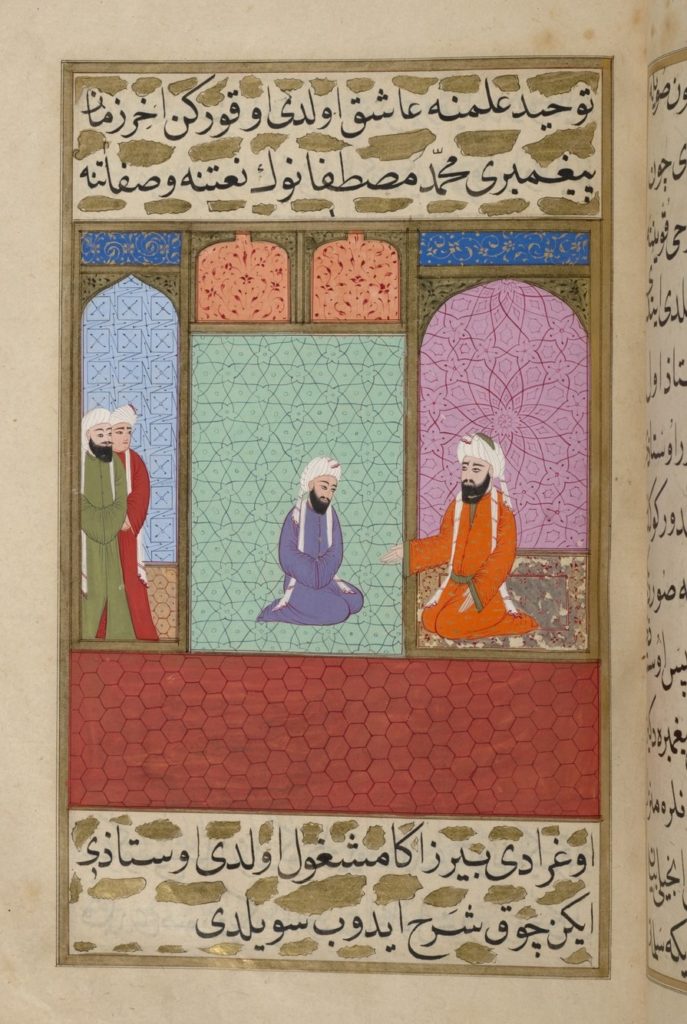
This is the story of a man who left Persia searching for the truth, and ended up in Medina joining the household of the Prophet Muhammad (pbuh). This is a beautiful and long story that deserves a reading by everyone. Born in Isfahan, he was trained as a Zoroastrian priest. After meeting a Nestorian Christian group, he became interested in Christianity but was imprisoned by his family to prevent conversion, and after escaping travelled to Syria. Salman’s last Christian teacher, informed him of a messenger who is said to have arrived in Arabia, and that’s where he travelled to.
On him joining Islam, Salman became a beloved of the Prophet (pbuh) and his companions. The battle that became known as ‘the battle of the trench’ saw the Arabs use trenches as a defensive mechanism, a strategy employed by Persians that Salman had recommended.
Abu Hurairah is said to have referred to Salman as “Abu al-Kitabayn” (“the father of the two books”; that is, the Bible and the Quran) and Imam Ali (ra) is said to have referred to him as “Luqman al-Hakeem” (“Luqman the wise,” a reference to a wise man mentioned in the Quran).
Salman participated in the conquest of the Sasanian empire in Persia, returning home but this time with Islam in his heart, and became its first governor. However, after the death of the Prophet Muhammad (pbuh), he disappeared from public life and returned when Imam Ali (ra) became the caliph. It was at the age of 88 that Salman began his life as a governor.
Narrated Abu Huraira:
“While we were sitting with the Prophet Surat al-Jumu’a was revealed to him, and when the Verse, “And He (Allah) has sent him (Muhammad) also to other (Muslims)…..” (62:3) was recited by the Prophet, I said, “Who are they, O Allah’s Apostle?” The Prophet did not reply till I repeated my question thrice. At that time, Salman al-Farsi was with us. So Allah’s Apostle put his hand on Salman, saying: “Even if Faith were at (the place of) Ath-Thuraiya (Pleiades, the highest star), then some man or men from these people (i.e. Salman’s folk) would attain it.” – Imam Bukhari
So, who was Salman?
While many of the Muslims in Medina (known as Ansar) argued this new Muslim was part of their group, much of the Muhajirun disagreed and debated he belonged to them as he was also a immigrant. Prophet Muhammad (pbuh) arrived on the scene and heard the argument. He was amused by the claims but soon put an end to the argument by saying: “Salman is neither Muhajir nor Ansar. He is one of us. He is one of the People of the House”.
On his death, Salman was buried in Al-Mada’in in modern day Iraq, while other sources claim in Isfahan or even Jerusalem (unlikely but Allah knows best).
Salman also translated the Quran into Farsi, becoming the first person to translate the Quran into a foreign language.
Persia under Islam
According to prolific orientalist Bernard Lewis:
“Arab Muslims conquests have been variously seen in Iran: by some as a blessing, the advent of the true faith, the end of the age of ignorance and heathenism; by others as a humiliating national defeat, the conquest and subjugation of the country by foreign invaders. Both perceptions are of course valid, depending on one’s angle of vision… Iran was indeed Islamised, but it was not Arabised. Persians remained Persians. And after an interval of silence, Iran re-emerged as a separate, different and distinctive element within Islam, eventually adding a new element even to Islam itself. Culturally, politically, and most remarkable of all even religiously, the Iranian contribution to this new Islamic civilisation is of immense importance. The work of Iranians can be seen in every field of cultural endeavour, including Arabic poetry, to which poets of Iranian origin composing their poems in Arabic made a very significant contribution. In a sense, Iranian Islam is a second advent of Islam itself, a new Islam sometimes referred to as Islam-i Ajam. It was this Persian Islam, rather than the original Arab Islam, that was brought to new areas and new peoples: to the Turks, first in Central Asia and then in the Middle East in the country which came to be called Turkey, and of course to India. The Ottoman Turks brought a form of Iranian civilization to the walls of Vienna”
So what lamps were lit in Persia?
Ibn Khaldun, the Andalusian genius narrates in his Muqaddimah:

“It is a remarkable fact that, with few exceptions, most Muslim scholars… in the intellectual sciences have been non-Arabs, thus the founders of grammar were Sibawaih and after him, al-Farsi and Az-Zajjaj. All of them were of Persian descent… they invented rules of (Arabic) grammar. Great jurists were Persians. Only the Persians engaged in the task of preserving knowledge and writing systematic scholarly works. Thus the truth of the statement of the prophet (Muhammad) becomes apparent, “If learning were suspended in the highest parts of heaven the Persians would attain it”… The intellectual sciences were also the preserve of the Persians, left alone by the Arabs, who did not cultivate them… as was the case with all crafts… This situation continued in the cities as long as the Persians and Persian countries, Iraq, Khorasan and Transoxiana (modern Central Asia), retained their sedentary culture.”
Some commentators argue that the term ‘Persian’ referred to the lands east of Arabia, this would have included the land of India.
Art and Architecture
No land, no people and no artistic culture can stand up to what the Persian has achieved (in my humble opinion). Persian architecture leads the Muslim world in its brilliance and majesty. Some historians trace the origin of the dome to the Persians, as well as the invention and development of the most beautiful element of Muqarnas. The city of Isfahan in Iran is amongst the most beautiful in its architecture.
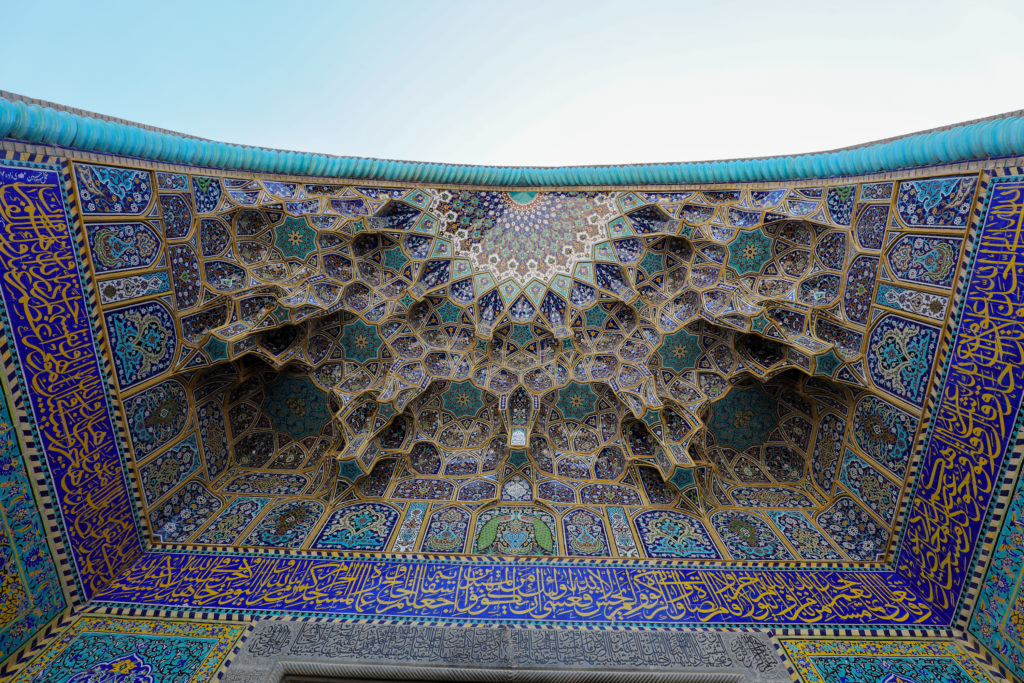
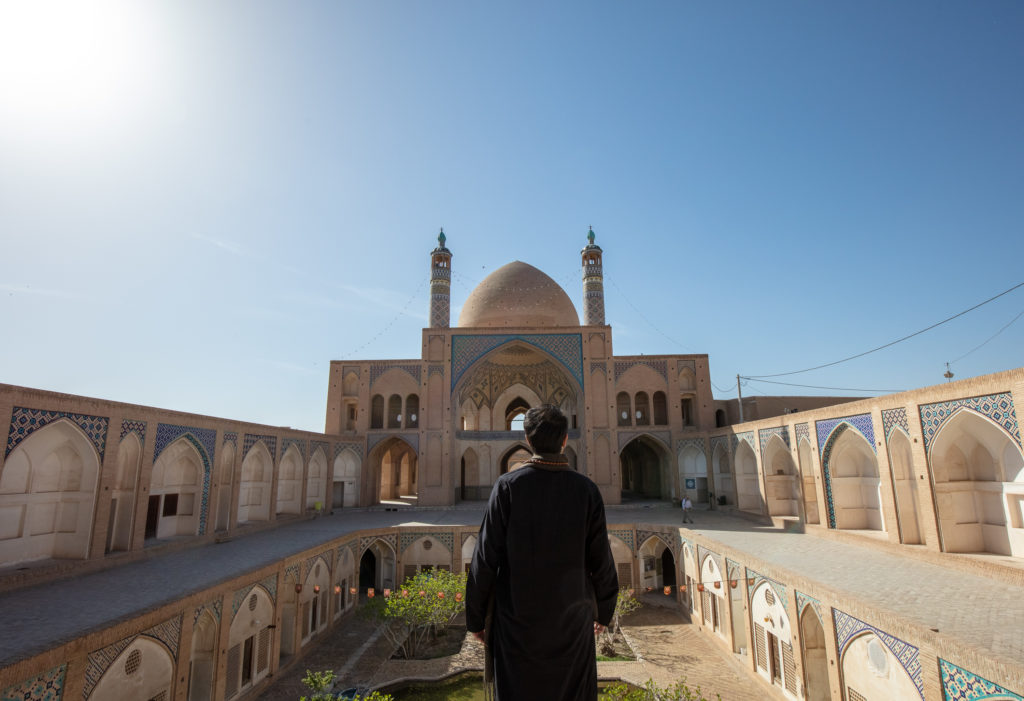
Music
Music, singing in particular, plays an important role in the naturally melodic nature of Persians. Visit Isfahan and its many bridges in the evenings (any day of the week) and find performances that will evidence, without doubt, the love and importance Persians place in music.
Greatest theologians of Shiite and Sunnis

Some of the most important theologians in Islam were from Perisia, namely: Shaykh Tusi, Imam Ghazali, Imam Fakhr al-Din Al-Razi and Al-Zamakhshari.
Hadith Collectors (to Sunni and Shiite Islam)
Shaikh Saduq, Shaikh Kulainy, Imam Bukhari, Imam Muslim and Hakim al-Nishaburi were Persian.
The greatest physicians, astronomers, logicians, mathematicians, metaphysicians, philosophers and scientists in the history of Islam and the wider medieval world
- Al-Farabi
- Omar Khayyam
- Muhammad Ibn Zakarriya
- Al-Biruni
- Avicenna (Ibn Sina)
- Nasīr al-Dīn al-Tūsī
Wikipedia lists over 270 Persian scientists alone in the pre-modern world. No other civilisation (past and present) can stand up to this achievement. These figures were polymath, and almost all had mastered mathematics, medicine, logic, philosophy, astronomy and religious sciences. The modern world today would not be where it was without the contribution of Persian scientists and scholars.
The greatest sheikhs of Sufism
- Mawlana Rumi
- Shams Tabrizi
- Abdul-Qadir Jilani
- Ruzbihan Baqi
- Al-Ghazali
Poets
- Mawlana Jalaluddin Rumi
- Shams Tabrizi
- Hafez Shirazi
- Saadi
- Omar Khayyam
- Farid Din Al-Attar
- Ferdowsi
- Nizami
- Muhammad Iqbal
Hafez
This 13th century
It’s been long and my heart’s keeper hasn’t sent a note,
not a single salam or kalam, he never wrote.
I sent a hundred letters, and that horse riding king,
didn’t send a note or write a greeting, not a thing.
To me, the wild-natured one with reason come to an end,
a gazelle-natured one with a partridge-prance, he didn’t send.
He knew that my heart was going to fly away,
and he didn’t write a trap in that elegant handwriting anyway.
I scream! For my drunken sāqi with the sweet lip,
knew that I was sick of sobriety and sent nothing for me to sip.
As much as I’ve boasted about my kindness and wisdom,
I’m nothing and have no rank in my lover’s kingdom.
Hafez! Behave yourself, for you can’t lament,
if from a king to a servant, a letter isn’t sent.
Translation by Muhammad Ali Mojaradi
Saadi
The following lines in bold are currently on display at the UN headquarters in New York. The work of Saadi is renowned for its clarity and impact.
“The children of Adam are the members of each other,
and are from the same essence in their creation.
When the conditions of the time hurt one of these members,
other members will suffer from discomfort.
If you are indifferent to the misery of others,
it is not fitting that they should call you a human being.”
بنى آدم اعضای یکدیگرند
که در آفرینش ز یک گوهرند
چو عضوى بدرد آورَد روزگار
دگر عضوها را نمانَد قرار
تو کز محنت دیگران بی غمی
نشاید که نامت نهند آدمی
Attar
Attar was one of the main influences on the Rumi, who one said of Attar:
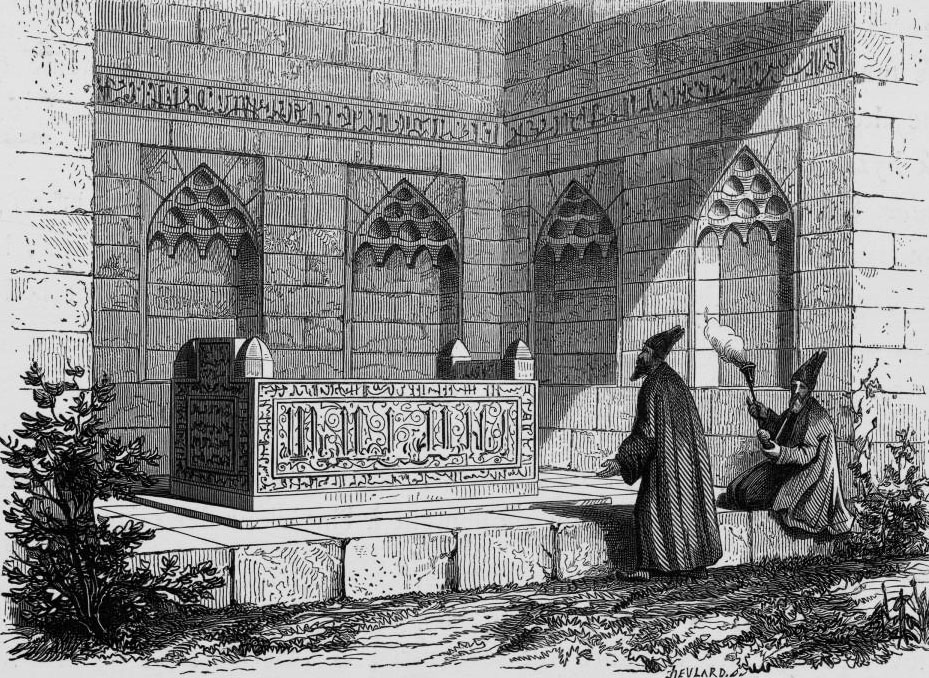
“Attar has roamed through the seven cities of love while we have barely turned down the first street”
Attar’s diwan, The Conference of the Birds is a masterful piece of work on imagery, metaphors and the use of esoteric themes of flight, inward vision, destruction of the self (ego), and oneness with God.
“If Simorgh unveils its face to you, you will find
that all the birds, be they thirty or forty or more,
are but the shadows cast by that unveiling.
What shadow is ever separated from its maker?
Do you see?
The shadow and its maker are one and the same,
so get over surfaces and delve into mysteries“
If you have not read or heard of The Conference of the Birds dear reader, order a copy now.
So is Iran only a Shiite country?
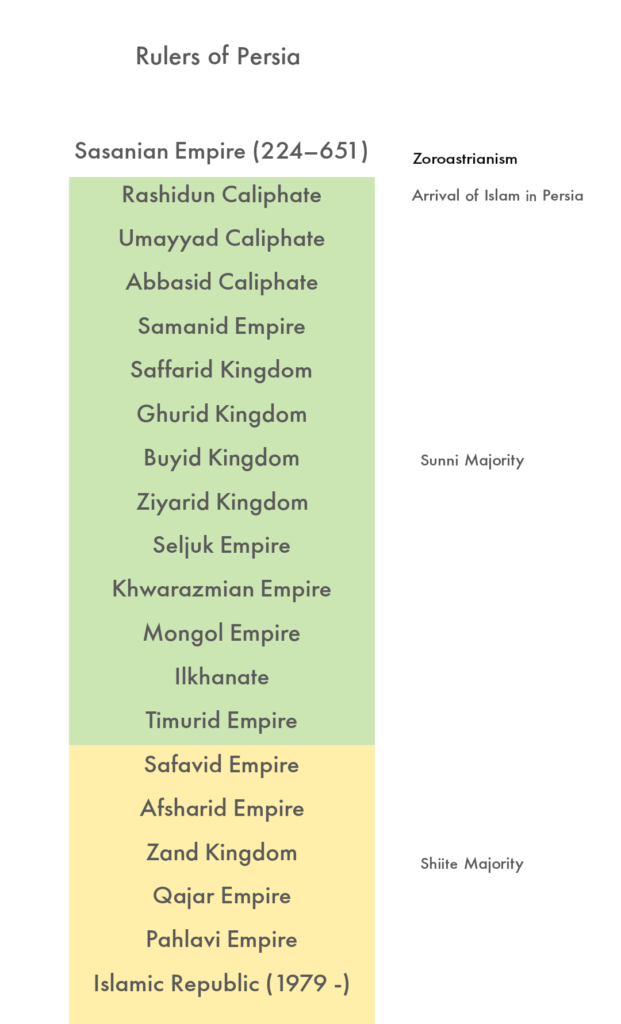
Though Iran today is known as a stronghold of Shiism, it was not so until the late 15th century. It was under the Safavids that that Shiism became the dominant state religion.
850 years under Sunnism
520 years under Shiism
Why we must then ask, do so many of us discard the elevated position of Iran in our world today? If you see Iran only through the lens of the Iranian revolution/ Imam Khomeini / Shiism, you are doing a great disservice to a people that developed the Islam you practise today.
To my non-Muslim friends, if you ask what debt you owe to Iran? The list is vast, but for start, it was the Persian that delivered the works of Greek philosophy to the world. If it was not for the Persian, the works of Aristotle, Socrates and Plato would have vanished.
Iran Today
The genius of the Persian has not ended. Despite the hardship that Iran and its people have put through, every now and then a gem is produced that exhibits the elevated position of Persians in our world stage.
Most recently Maryam Mirzakhani, a mathematician and professor at Stanford university was awarded the Fields Medal, the most prestigious award in mathematics. She is the only women in the world to ever be awarded this prize. In 2017 she died of cancer at age 40.
Poetry, the national activity of Iran, has not ended either. In the last one hundred years we have seen the likes of Ahmad Shamlou, Forough Farrokhzad and Sohrab Sephehri continue the tradition of incredible literature.
